Continuing with my speaker projects; I have finished building a Sonotube subwoofer for my Box One speakers. As I discovered, those speakers miss a significant part of the bottom end. I made up for this by using a Polk Audio PSW-10 subwoofer that was part of my home theater system.
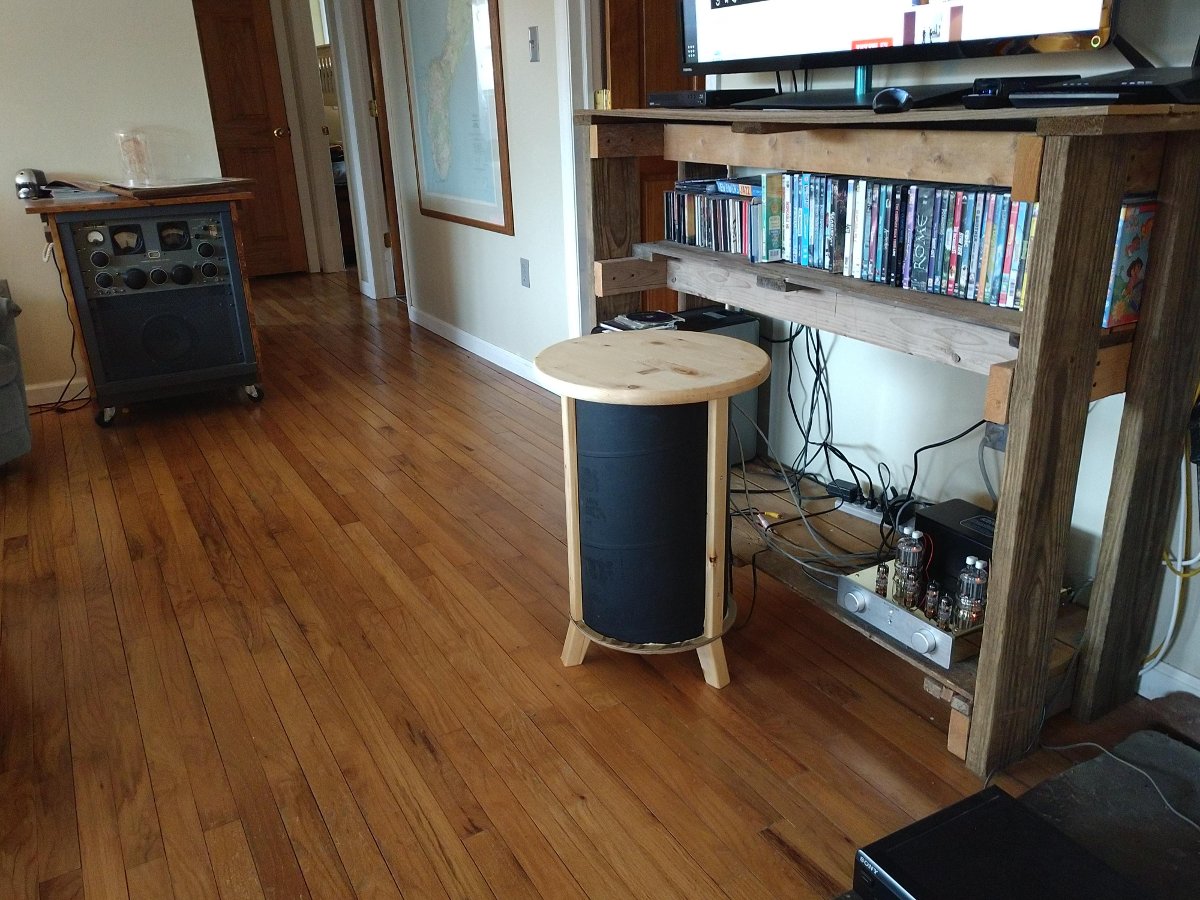
I found the PSW-10 was certainly loud enough but lacked definition which became noticeable when the new speakers were installed. Thus, I began thinking about a sealed box subwoofer. When designing the enclosure, there is a good bit of math involved in calculating the box volume.
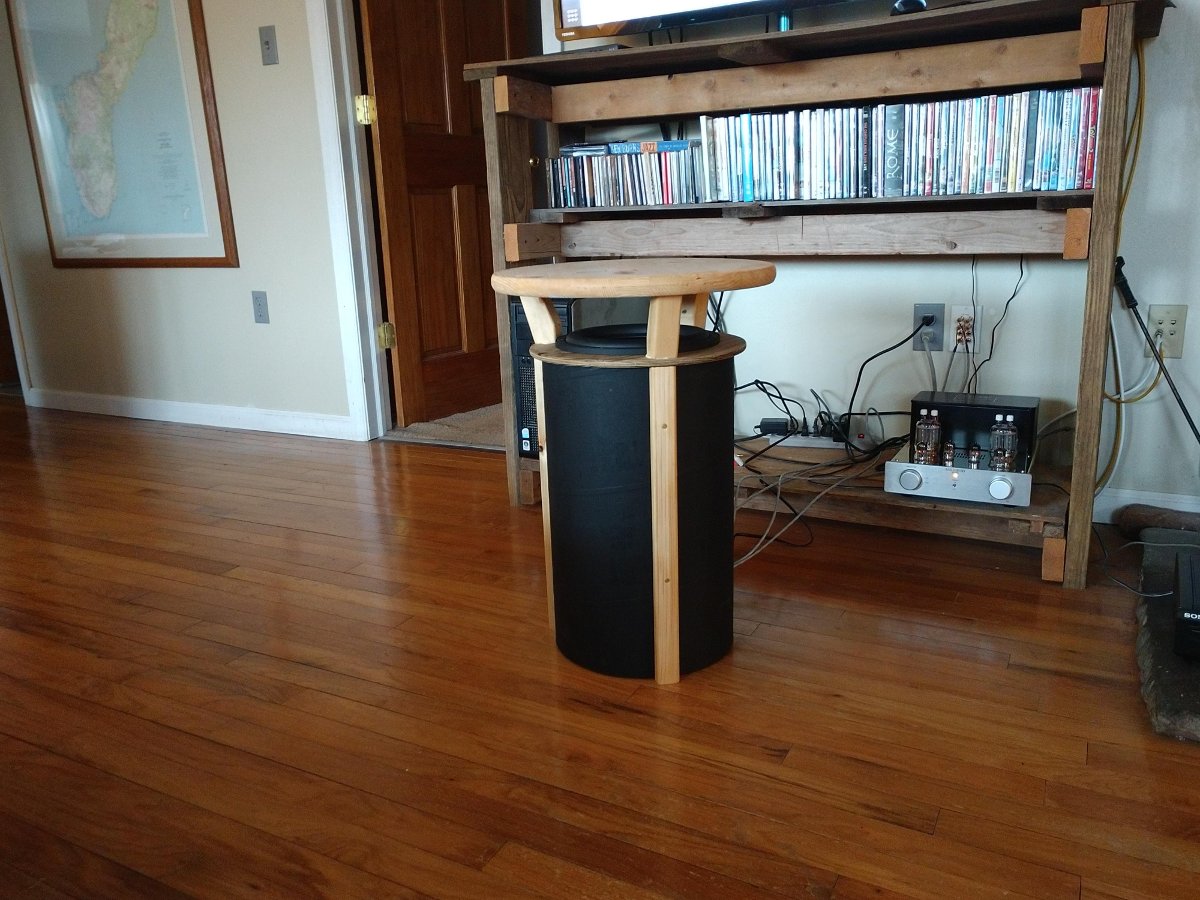
I now have a bit of a dilemma; should I set the subwoofer up downward firing into the floor or should I set it up upward firing into a dispersion cone? I have tried it both ways and in the downward firing position, it shakes the floor. That is a great effect for watching movies like “The Hunt for Red October,” where there is a lot of bass rumbling. It is also great for blasting some Led Zeppelin or Pink Floyd Dark Side of the Moon. However, the idea of a sealed subwoofer was to add detail to the bass, and that it does. The Polk Audio PSW-10 certainly had bass, but it was ill-defined. The sealed sono-sub has less low, low bass but the bass instruments now sound as good as the rest of the orchestra. In the upward position, I get clean omni directional bass which sounds fantastic when listening to P.I. Tchaikovsky Concert #1 in B flat minor, opus 23. That was the idea when I started making this. Still, blasting Led Zeppelin is fun and I recommend it to everyone. Decisions, decisions…
After a couple of months of evaluation, I finally decided on the downward firing configuration. It does add another dimension to watching movies. Now, I kind of want to get a bass shaker for the floor underneath the sofa.
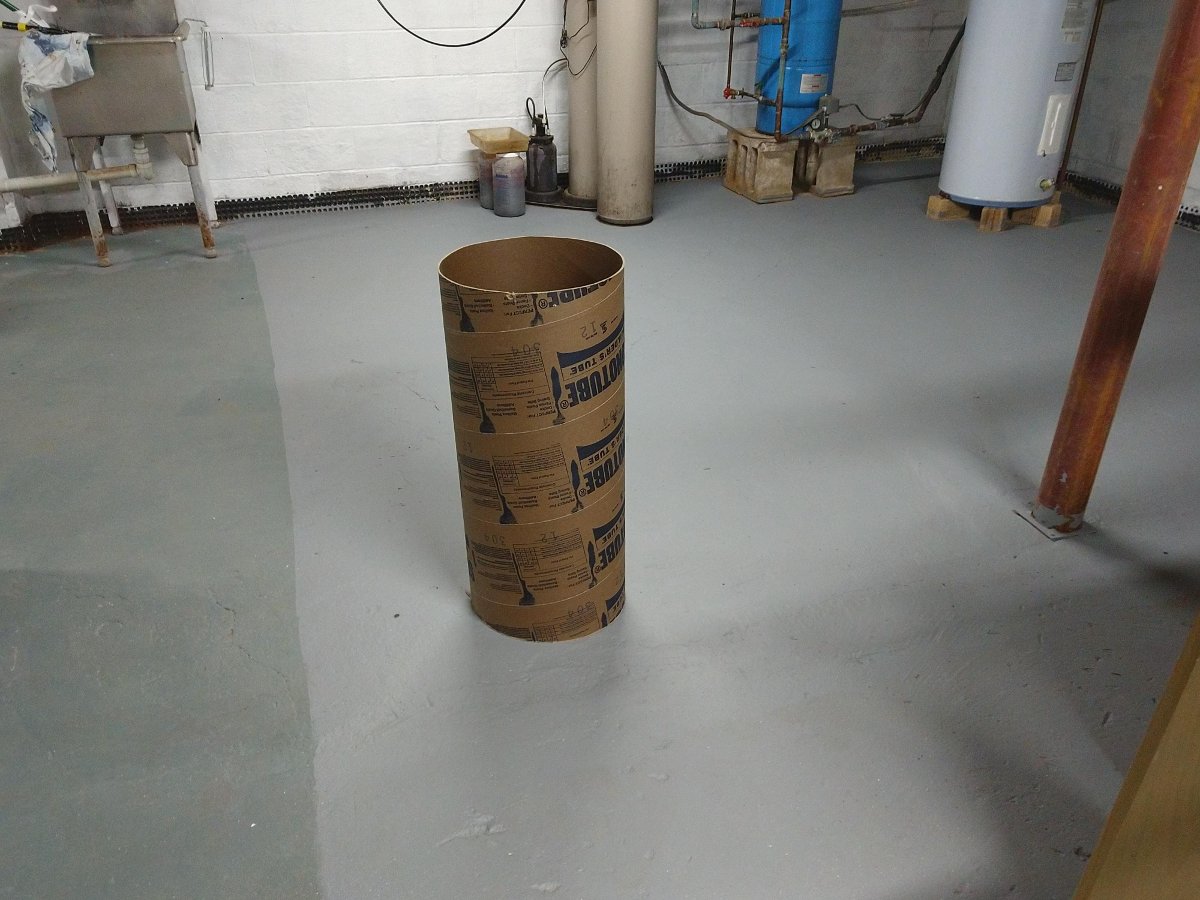
In any case, the technical details for this subwoofer are as follows:
- Driver: Dayton Audio RSS265HF-4, 10″ subwoofer, 4 ohm
- Plate Amp: Dayton Audio SA70 70 watt
- 12″ (30.48 cm) diameter sonotube, 19 3/4″ (50.165 cm) long
- Miscellaneous pieces of wood, paint, screws, and foam that were laying around
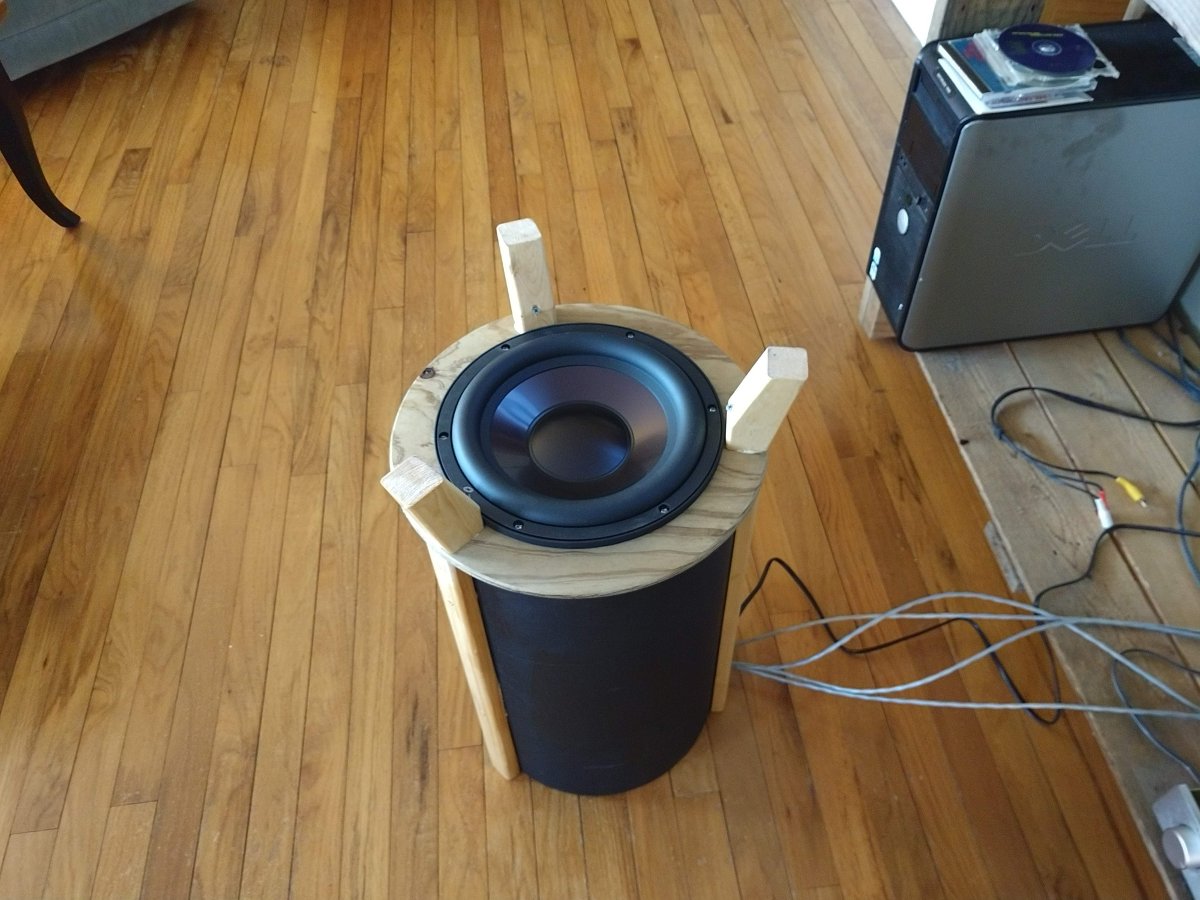
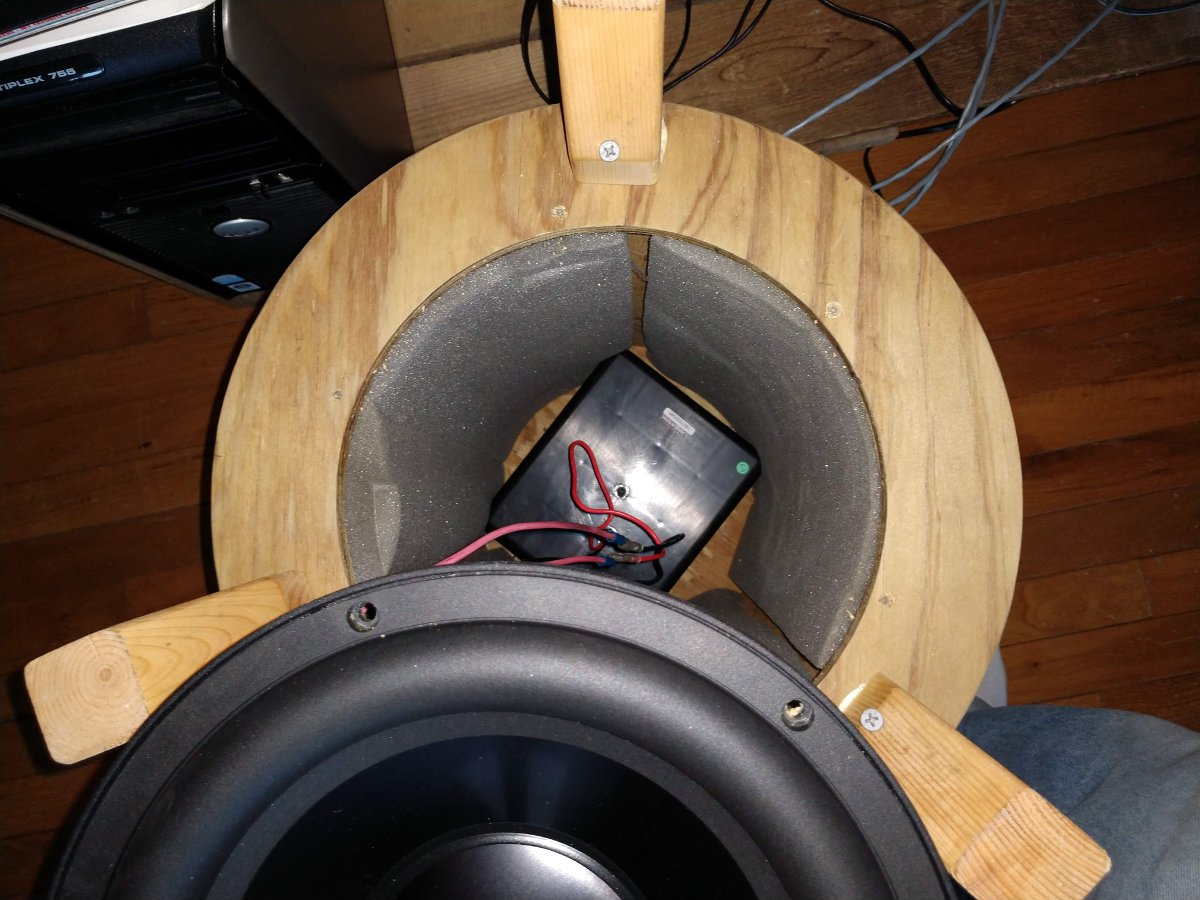
I found a driver that will work well with a sealed enclosure. This is important because some drivers work better with ported enclosures and some with sealed enclosure. Another detail is whether or not the driver can be mounted horizontally. Some driver cones will deform if placed in the upward or downward-firing position. The Dayton subwoofer selected will not suffer from that.
I used an online calculator called speakerbox lite to calculate the volume of my sealed subwoofer enclosure. There are several choices for the type of response the designer is looking for. Initially, I thought about critically damped, but the box volume was 125 liters, which is more than a 12 x 48″ (30.48 x 122 cm) sonotube. I settled on Bessel-2, which has a box volume of 56.68 liters. That was easily obtainable with the sonotube I had on hand.
The plate amp is a run-of-the-mill 70-watt Dayton unit. Truth be told, it runs a little bit hot and I’d consider something else if I were making this design again.
For construction, I carefully cut the sonotube to the right length with a jig saw. The outside of the sonotube was roughed up with some 220 grit sandpaper before painting it flat black.
The individual pieces were glued together with gorilla glue. The wood braces on the outside of the sonotube connect with the wood braces on the inside of the sonotube with brass wood screws. The plywood rounds were cut with a router to a close fit. Being that this is a sealed design, I took some extra time with a non-silicone-based sealant to make sure that the entire enclosure was tight. All in all, the enclosure certainly feels tight.
It sounds great and I feel like my subwoofer now matches the quality of the other speakers I am using.

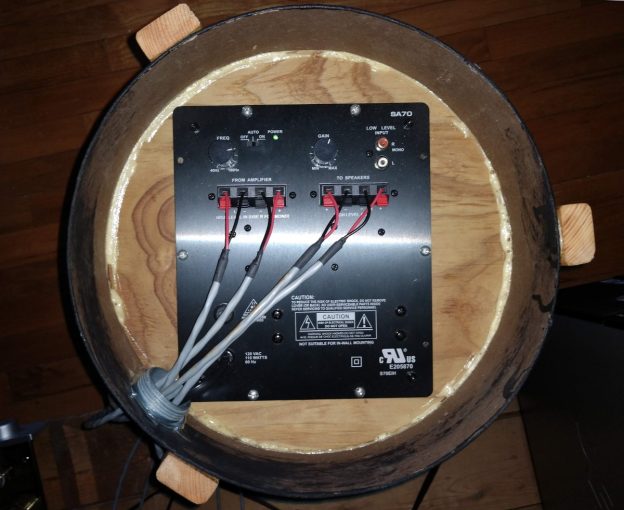

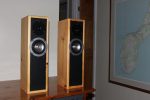

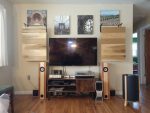
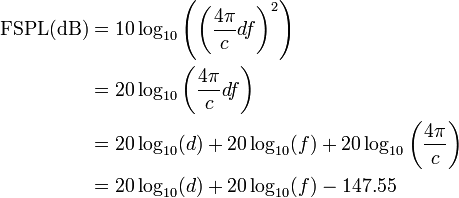
You are getting good at this!
What are you using for a crossover? Built into the amp?
Chuck, the cross over is built into the amp. It is adjustable from 300 Hz down.
Use Gorilla Glue #4 for maximum enjoyment of “Dark Side of the Moon”.
Yeah, I’m with you on the quality vs. the quantity of bass some systems have. Some have lots of quantity, but piss-poor quality. ‘Muddy’, ‘flabby’, a poorly defined quality to it. Like what some of the kids have in their ‘boom’ cars. Yuck.
Like you, I like a crisp and clean sound to it. Where if you listen closely, you can practically hear the sound of the bass player’s fingernails on the bass string windings. Mmmmmmm. A ‘crisp’, ‘clean’, ‘dry’ sound.
It looks like you have quite a few options available to tweak it. You might consider trying moving the sub into the room corners. That exploits using the walls in the corners to be a final part of the enclosure, ‘corner loading’ it.
That effect can work wonders on the main speakers as well, extending their response. Suspending them from the ceiling in the corners, ‘flying’ them like what some concert sound companies use for rock bands on tour. Then aiming the tweeters towards your listening position.
I’m looking forward to seeing future updates on how your system evolves. I’m getting an itch to try a tube amp myself…
Why did you use a non-silicone based sealant? Is there something wrong with silicone or was it just what you had on hand?
It was what I had on hand. I think silicone sealant can out gas, but I don’t think that will ruin anything.